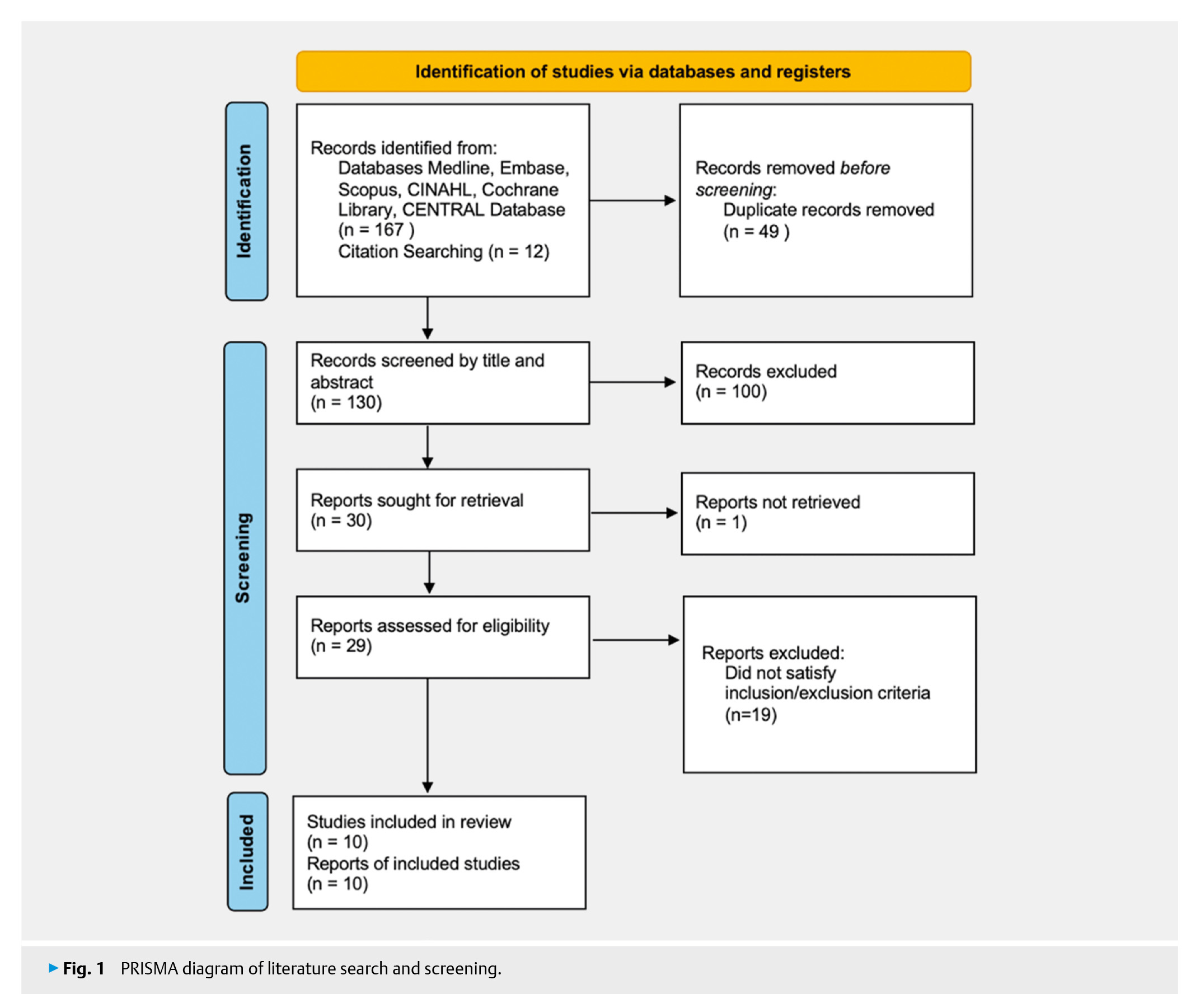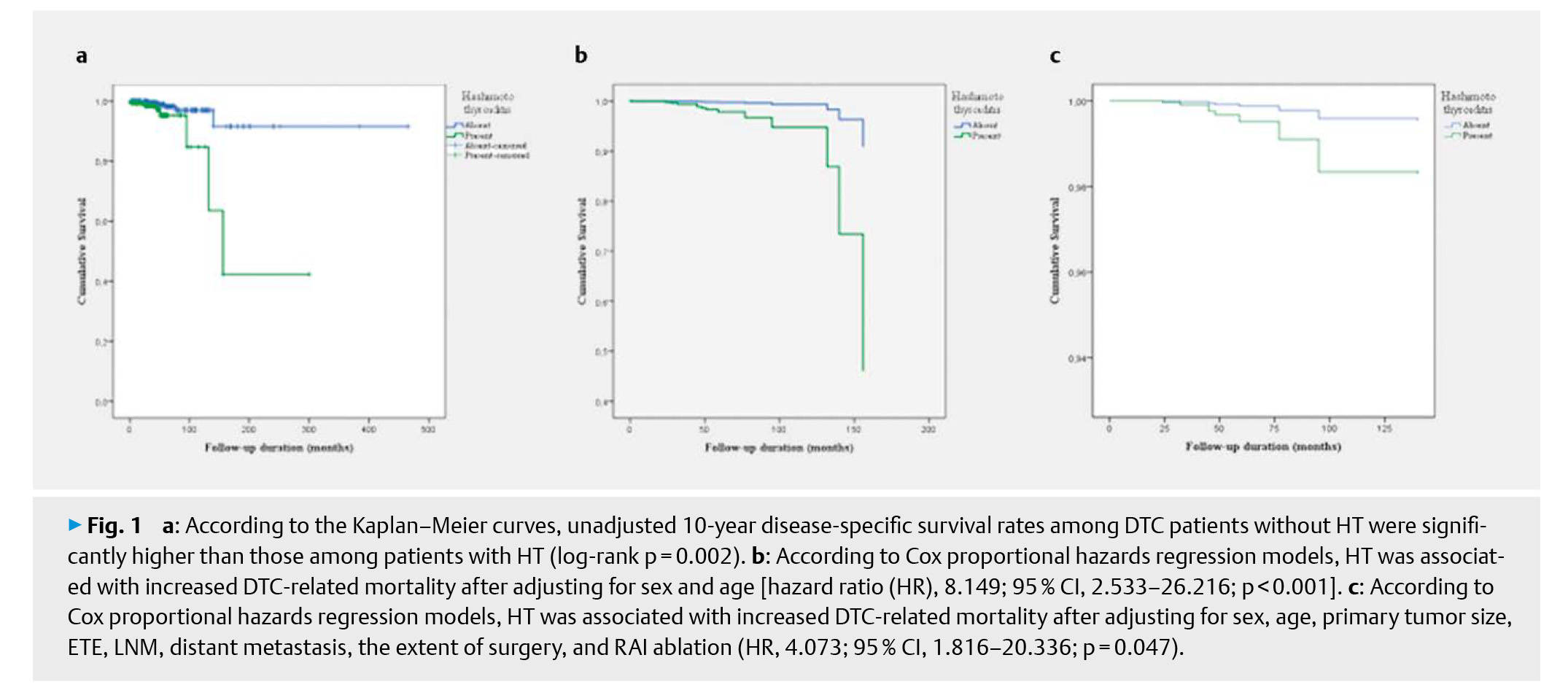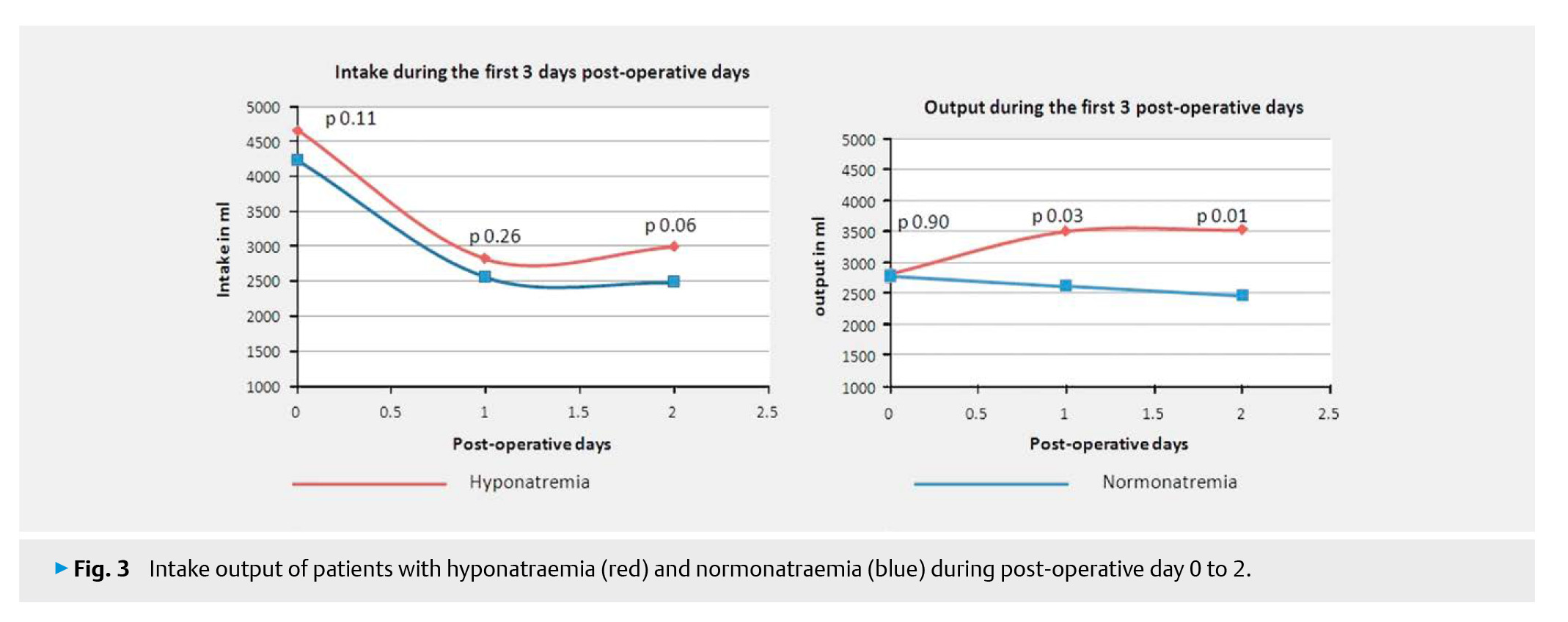
Issue 6 · Volume 55 · June 2023
Hormone and Metabolic Research 2023年第6期现已上线,欢迎免费阅读本期三篇精选论文。
Original Article: Endocrine Care
Yu J et al.
We performed a systematic review and meta-analysis of the literature regarding cardiovascular outcomes of differentiated thyroid cancer (DTC) patients who are on long term thyroid stimulating hormone suppression. Searches were carried out using Prisma guidelines in Medline, Embase, CENTRAL, CINAHL and Scopus databases. Eligible papers were those which investigated discrete cardiovascular clinical outcomes in TSH suppressed patients and meta-analysis of selected studies was performed using Revman 5.4.1. We found a total of 195 879 DTC patients with median length to follow up of 8.6 years (range 5–18.8 years). Analysis showed DTC patients to be at higher risk of atrial fibrillation (HR 1.58, 95% CI 1.40, 1.77), stroke (HR 1.14, 95% CI 1.09, 1.20) and all-cause mortality (HR 2.04, 95% CI 1.02, 4.07). However, there was no difference in risk of heart failure, ischemic heart disease or cardiovascular mortality. These findings suggest that degree of TSH suppression must be titrated to accommodate risk of cancer recurrence and cardiovascular morbidity.

Original Article: Endocrine Care
Demir AN et al.
The study is an investigation of aggressive tumor features, prognosis, and disease-specific mortality rates of differentiated thyroid cancer (DTC) in the presence of concomitant Hashimoto’s Thyroiditis (HT). The data of patients with DTC followed in our tertiary care center between 2000–2022 were analyzed. Variables such as patient age, gender, preoperative serum autoantibody levels, tumor characteristics, and treatment modalities were obtained from medical records. The diagnosis of HT was based either on the presence of a positive result in the pathological examination and/or on antibody positivity. A total of 637 patients [mean±SD age, 44.9±13.5 years; 485 women [76.1%)] were included in the analysis. The overall prevalence of coexistent HT was 22.9% (n=146). The disease-specific mortality associated with DTC was 2.9%. DTC patients with HT compared to those without; have more positive lymphovascular invasion (p<0.001), and lymph node metastases (p<0.001). According to the Kaplan–Meier curves, disease-specific survival rates among DTC patients without HT were significantly higher than patients with HT (log-rank p=0.002). The disease-specific mortality rate was 4.79% in DTC patients with HT, it was 1.43% in those without HT. Hashimoto thyroiditis was not associated with a 10-year recurrence-free survival (p=0.059). Differentiated thyroid cancers with concomitant HT are associated with some aggressive tumor features (such as lymphovascular invasion and nodal metastasis) and lower survival. In staging systems based on tumor risk factors, it may be useful to evaluate the presence of concomitant HT as a prognostic factor.

Original Article: Endocrine Care
Predictors of Delayed Hyponatraemia After Surgery for Pituitary Tumour
Rajan R et al.
Delayed hyponatraemia(DH) is a common complication following trans-sphenoidal surgery(TSS) for pituitary tumour. We evaluated the prevalence of DH following TSS, and assessed the factors associated with DH, including early post-operative diabetes insipidus(EPDI). This retrospective study included 100 TSS for pituitary tumours in 98 patients, over a period of 26 months. Subjects were divided into two groups: those who developed hyponatraemia and those who did not develop hyponatraemia, during post-operative days 4 to 14. The clinical characteristics and peri-operative parameters were compared between the two groups, to identify factors predicting DH. The mean age of the patients was 42.0±13.6 years, 58 (59%) were females and 61 (61%) had functional tumours. Thirty-six patients(36%) developed DH following TSS of whom majority(58%) were diagnosed on post-operative days 7 and 8; only 8/36 (22%) were symptomatic. Syndrome of inappropriate antidiuretic hormone secretion(SIADH) was found to be the most common aetiology of DH. On logistic regression analysis, intra-operative cerebrospinal fluid(CSF) leak (OR 5.0; 95% CI 1.9–13.8; p=0.002), EPDI (OR 3.4; 95% CI 1.3–9.2; p=0.015) and peri-operative steroid use (OR 3.6; 95% CI 1.3–9.8; p=0.014) were found to be significantly associated with DH. In conclusion, EPDI, intra-operative CSF leak and peri-operative steroid use were significant predictors of DH. EPDI predicts moderate to severe hyponatraemia with 80% specificity but has low sensitivity(47%). As most patients have asymptomatic hyponatraemia, serum sodium measurement on POD 7 to 10 would be helpful to identify DH in patients at increased risk.

